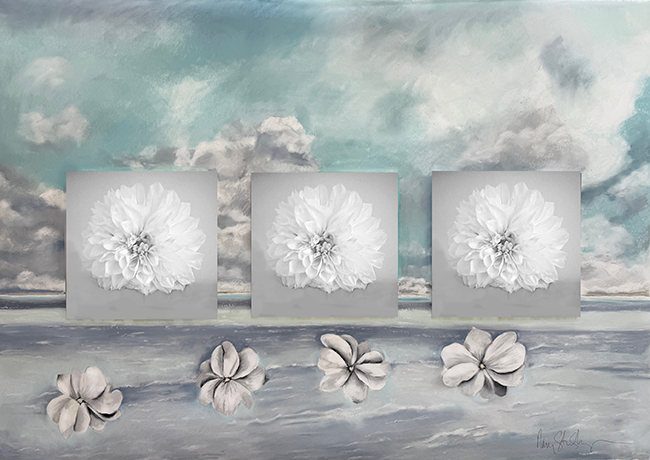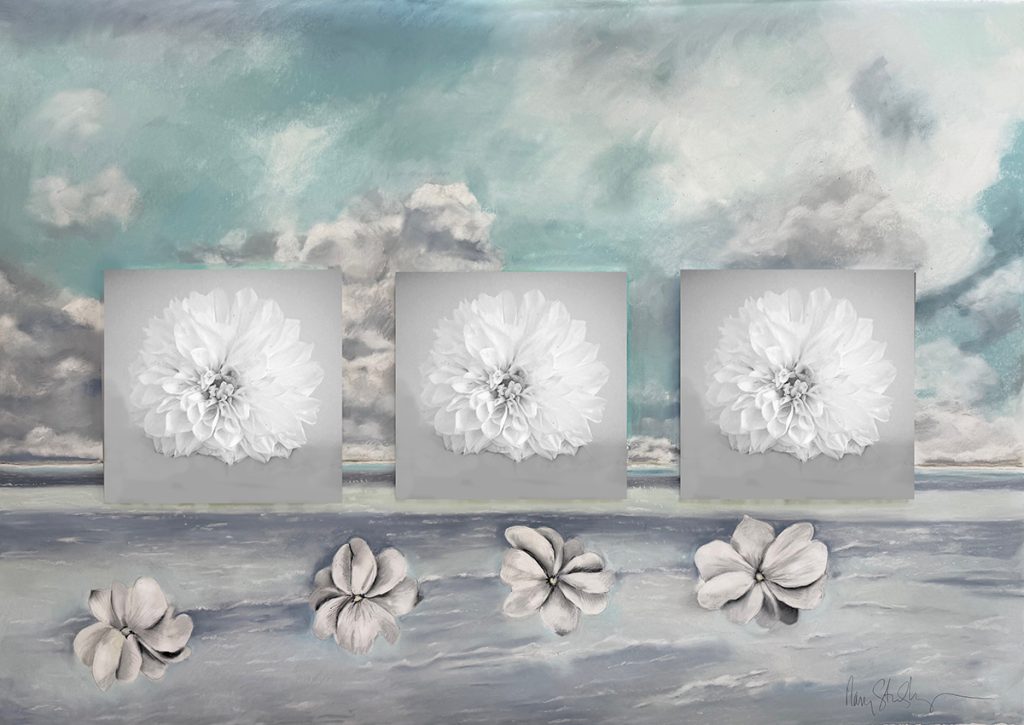Nancy Staub Laughlin has carved her own path in American art, balancing the delicate power of pastel with the sharp clarity of photography. A graduate of Moore College of Art in Philadelphia, she has built a career that spans exhibitions across the east coast, coverage in media outlets, and a place in both corporate and private collections. Her work has been praised by critics such as Sam Hunter, who called it “refreshingly unique.” But her reputation is not just about technique or recognition—it’s about her eye for light, the way she pulls it into her compositions and lets it change how we see the natural world. Laughlin has never been content to replicate what is in front of her; instead, she bends nature through her own lens, mixing photography and pastel to arrive at something that is both familiar and unexpected.

The Luminescence of Light
At the heart of Laughlin’s practice is an enduring fascination with light. Her piece The Luminescence of Light is a clear continuation of this obsession, both in form and concept. The work combines pastel on paper with mounted photographs, creating a layered visual language that resists easy categorization. The subject matter—clouds, dahlias, salt flats—may seem ordinary at first glance, but she renders them with an attention that makes the viewer pause.
Laughlin sees connections across the natural world, threads woven by light itself. The puff of clouds resembles the pillow-like structure of a dahlia. The foam along salt flats mirrors the softness of petals. Through these comparisons, she emphasizes the rhythm of repetition and echo that nature provides. It is not about one flower, one sky, or one landscape—it is about the shared vocabulary of form and texture, held together by light.
Pastel and Photography
Her medium is part of the story. Pastel on paper has an intimacy, a softness that naturally lends itself to capturing light. But Laughlin pushes beyond this, using photography as both a counterpoint and a complement. The photographs anchor her work in reality, while the pastel infuses it with the dreamlike. The combination challenges the viewer: where does the photograph end and the pastel begin? What is observed and what is constructed?
In The Luminescence of Light, this interplay is vital. The photographs ground the viewer in tangible reality—the salt flats, the petals, the clouds. The pastel builds on these foundations, heightening them, making the familiar shimmer with new resonance. The result is not pure realism and not pure abstraction but something that occupies a space between.
Light as Subject and Metaphor
Laughlin’s interest in light is not only technical. It is symbolic. Light has always carried associations of truth, clarity, and revelation, but in her work it also carries fragility. A cloud illuminated may seem eternal, but it is transient. A flower bathed in light will fade with time. Even the salt flats, which seem so solid, change with tide and weather. By binding these elements together under the theme of light, she is pointing us toward the impermanence of nature and, by extension, of our own existence.
This is not presented with melancholy, though. Instead, Laughlin celebrates the momentary brilliance that light creates. She is attentive to the fleeting details we might otherwise overlook—the curve of foam, the curve of a petal, the way light softens or sharpens edges. Her work encourages us to see more, to look longer, to appreciate small echoes that tie the world together.
Continuity in Her Practice
The Luminescence of Light is not an isolated piece but part of a continuum in Laughlin’s body of work. She has long pursued themes of light, nature, and form, often with an experimental combination of photography and pastel. Each new work builds on the last, extending her visual vocabulary while remaining tethered to the same fascination.
Her career has been about persistence—about staying true to her themes while exploring new ways to express them. Exhibitions and media attention validate her path, but the consistency of her vision is what truly defines her. She is an artist who has chosen to dig deep rather than scatter wide, refining her focus until light itself becomes her signature.
Closing Thoughts
Nancy Staub Laughlin’s The Luminescence of Light shows an artist working at the intersection of observation and imagination. She captures the everyday but transforms it through comparison, light, and the marriage of two mediums. The work is about clouds, flowers, and salt flats, but it is also about much more—the persistence of light, the echo of form, the fragile brilliance of nature.
Her art reminds us that beauty is not in the grand gesture but in the attentive eye, the willingness to notice connections and let them resonate. It is, as Hunter once said, refreshingly unique.

